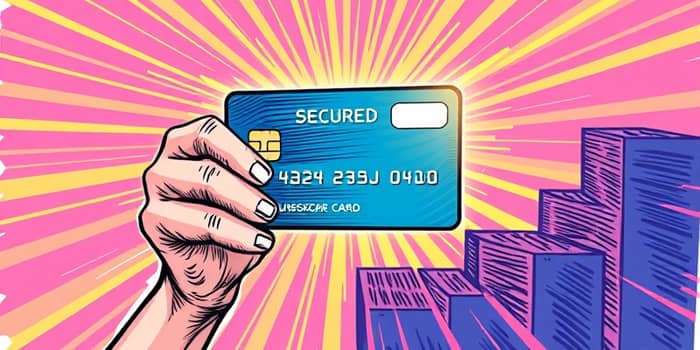
For many, the path to financial freedom can feel like an uphill climb. A history of missed payments, limited borrowing options, and the weight of high-interest debts can leave you feeling stuck. Yet, there is a powerful tool waiting in the wings: the secured credit card. When handled responsibly, this tool can not only rebuild your credit but evolve into an unsecured card—no deposit required. In this article, we’ll illuminate a clear, inspiring journey and provide actionable steps so you can transform a security deposit into a gateway of opportunity.
Secured credit cards require a cash deposit that becomes your credit limit. This deposit protects the issuer and allows those with limited or damaged credit to participate in borrowing. In contrast, unsecured cards offer credit without collateral, often with better rewards, higher limits, and lower fees—but they demand a stronger credit history.
By starting with a secured card, you take the first crucial step in a broader plan: rebuild your credit and lay the groundwork for future financial success. The deposit isn’t a fee; it’s your collateral, refundable when you graduate to an unsecured card or close the account in good standing.
Secured cards that offer an upgrade path act as a bridge to mainstream credit products. This journey typically unfolds over 6 to 18 months, during which issuers monitor your behavior. Follow this roadmap:
After a designated period—often 6 to 12 months—some issuers automatically review your account. Others invite you to request an upgrade once you meet their criteria. When approved, you’ll see the deposit returned and enjoy the benefits of an unsecured card.
Different issuers have nuanced policies, but they all hinge on the same pillars:
When reviewing your eligibility, lenders consider these factors. By focusing on these core behaviors, you send a clear signal of financial responsibility—one that can lead to upgraded benefits, higher limits, and fewer fees.
Not all secured cards are created equal. Some are designed with the express purpose of graduation, offering automatic reviews and transparent upgrade paths. Here are two standout examples:
Choosing a card with an upgrade feature means you’re investing in a step-by-step path toward mainstream credit—and eventual access to rewards and perks reserved for those with solid histories.
Rebuilding credit isn’t just about waiting; it’s about strategic action. While your secured card works its magic, take these supplementary steps:
Also, resist the urge to close your oldest account after upgrading. Keeping that account open can improve your length of credit history—contributing to up to 15% of your credit score calculation.
Imagine Sarah, who once faced a 580 credit score after a medical emergency wiped out her savings. She opened a secured card with a $200 deposit and committed to making prompt payments. Within nine months, her issuer returned the deposit, converted her account to unsecured status, and raised her limit. Today, Sarah enjoys a 710 score, access to travel rewards, and the confidence that comes from taking charge of her finances.
You can replicate Sarah’s success. Begin with a clear plan, maintain steady habits, and stay informed about your issuer’s policies. When your behavior aligns with lender expectations, you’ll see doors open that once seemed sealed.
1. What happens to my security deposit after upgrading?
The issuer returns your deposit, usually as a statement credit or direct deposit, once the upgrade is processed and any outstanding balance is paid.
2. Will upgrading impact my credit score?
Transitioning from secured to unsecured typically has a positive effect, as your deposit is refunded, your limit may increase, and you maintain a positive payment history.
3. What if my upgrade request is denied?
You can continue using the secured card responsibly until you reapply, or leverage your improved score to qualify for an unsecured card from another issuer.
4. Are there secured cards without upgrade options?
Yes. Always research issuer policies and choose a card specifically designed with a graduation pathway to avoid disappointment.
Using a secured card that upgrades to unsecured status is more than a credit-building strategy; it’s a testament to perseverance and discipline. Every on-time payment you make isn’t just a transaction—it’s a declaration of responsibility. With patience, the financial world shifts in your favor: your deposit returns, your credit limit grows, and your options expand. Embrace this journey with confidence, watch your credit profile flourish, and unlock the freedom you deserve.
References













